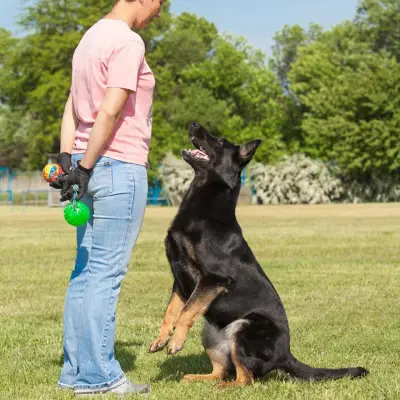Whether it's a wagging tail or a gentle nuzzle, dogs have a unique way of bringing comfort and joy. This is especially true for therapy dogs, whose special role is to provide psychological or physiological therapy to individuals other than their handlers. These dogs are companions and healers, trained to manage various conditions. Let's delve into what makes therapy dogs so special and how they contribute to mental and physical well-being.
Jump to:
What are Therapy Dogs?
A therapy dog is a trained dog that provides comfort, affection, and support to people in hospitals, retirement homes, schools, and other settings. They are known for their calm and friendly temperament. These dogs are different from service dogs, as they are meant to interact with a variety of people rather than assisting a single individual with specific tasks related to a disability.
Recommended for you!
Best SellersWhat Does a Therapy Dog Do?
Therapy dogs have a remarkable and unique role: they are specially trained to provide comfort, support, and affection to those who may be facing challenges or stressful situations. Their aim is to bring a sense of joy and companionship to people who need it most. Let's delve into the diverse settings and ways in which therapy dogs offer their invaluable support:
1. Spreading Joy in Hospitals
One of the most recognised roles of therapy dogs is their visits to hospitals. They often stroll through wards, bringing smiles to both patients and staff. Their presence can be a bright spot in an otherwise difficult day for those undergoing medical treatments. By simply being there, these dogs offer a sense of normalcy and homeliness in a sterile hospital environment.
2. Supporting Students in Schools
In educational settings, therapy dogs are known to contribute significantly to students' emotional wellbeing. They may be present in classrooms or special sessions where students can interact with them. This interaction helps reduce stress during exams, easing social anxieties and improving literacy skills as children read aloud to a non-judgmental listener.
3. Aiding in Disaster Relief
In times of crisis, such as natural disasters, therapy dogs play an important role in providing emotional support to those affected. Their presence can offer a sense of comfort and normalcy amidst the chaos, helping people process and cope with the traumatic experiences they've endured.
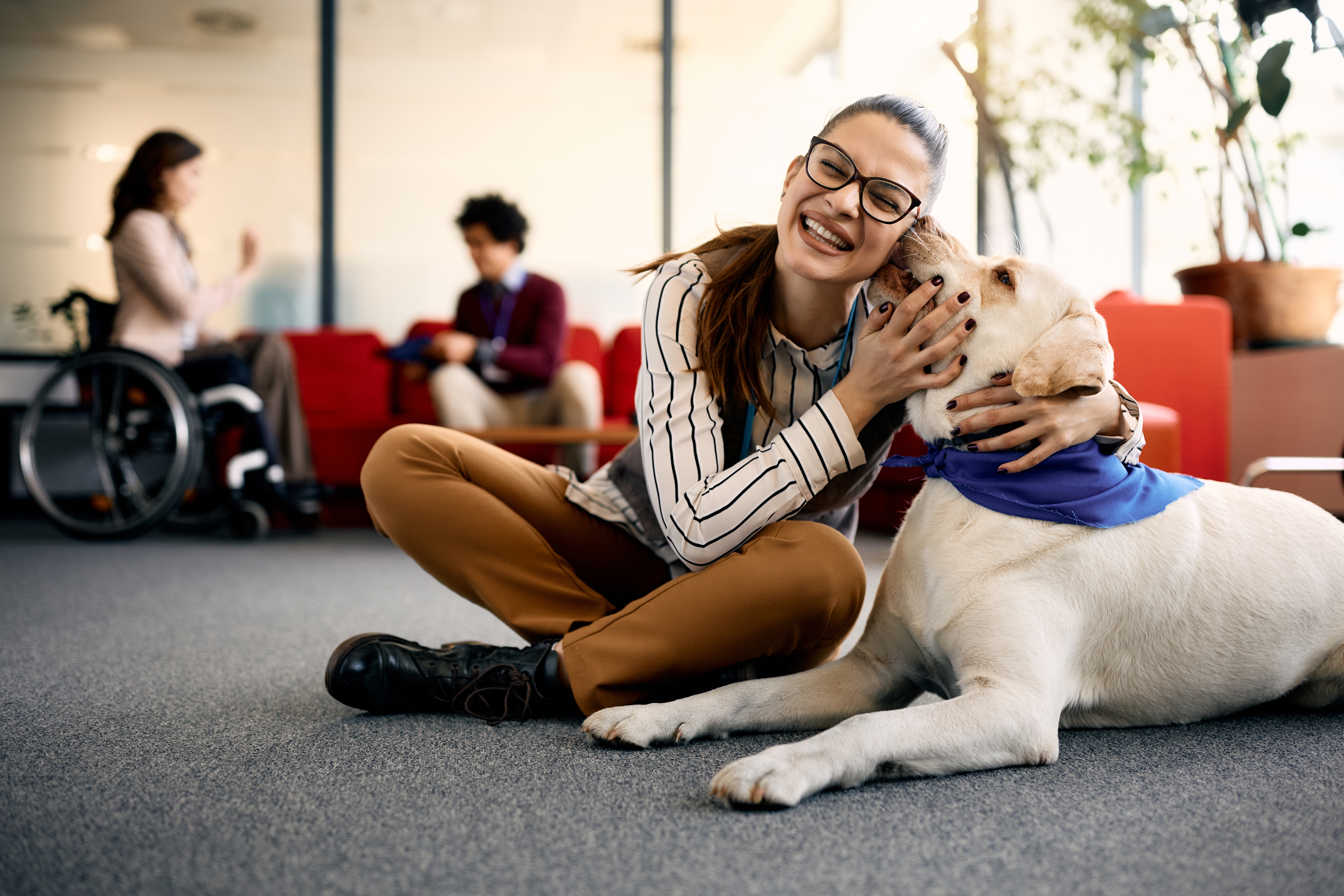
4. Promoting Mental Health
Therapy dogs are powerful allies in the battle against mental health challenges like anxiety, depression, and loneliness. Their unconditional love and presence can lift spirits, provide a sense of companionship, and even act as a form of non-verbal therapy, encouraging openness and emotional release in therapy sessions.
5. Improving Physical Health
The benefits of therapy dogs are also physical. Studies show that interacting with a therapy dog can lower blood pressure, reduce the quantity of stress-related hormones in the body, and slow a rapid heart rate. This physiological response can be particularly beneficial for those with cardiovascular diseases or experiencing high levels of stress.
6. Enhancing Social Skills
For people who struggle with social interactions, therapy dogs can act as social catalysts. They help break the ice in new or challenging social environments, making it easier for people to connect with others.
7. Providing Non-Judgmental Companionship
Therapy dogs offer a form of companionship that is free from any judgment. This aspect is particularly important for those who may feel marginalised or isolated due to their circumstances or conditions.
Can Therapy Dogs Help with Anxiety Attacks?
Dogs, by their very nature, are attuned to human emotions and can sense when someone is anxious or upset. Their presence can be immensely calming during an anxiety attack, providing a sense of security and companionship that is often much needed.
Do Therapy Dogs Sense Sadness?
Therapy dogs can sense sadness and other emotions. They often respond with affectionate gestures, like cuddling or nuzzling, which provide great comfort.
The Qualities of a Therapy Dog
Therapy dogs are trained companions chosen for their unique qualities that make them suitable for therapeutic work. Understanding these qualities can help you appreciate the role they play in providing comfort and support:
1. Calm Demeanour
One of the most important qualities of a therapy dog is a calm and stable demeanour. These dogs are often faced with unfamiliar and sometimes chaotic environments, yet they remain composed and soothing. This tranquillity is contagious, often helping those around them to feel more relaxed and at ease.
2. Gentle and Friendly Nature
Therapy dogs are inherently gentle and friendly. They approach people with a soft and open demeanour, which is essential in establishing a quick and strong bond with the people they are helping. Their friendly attitude makes them approachable and inviting, encouraging interaction from those who might be shy or withdrawn.
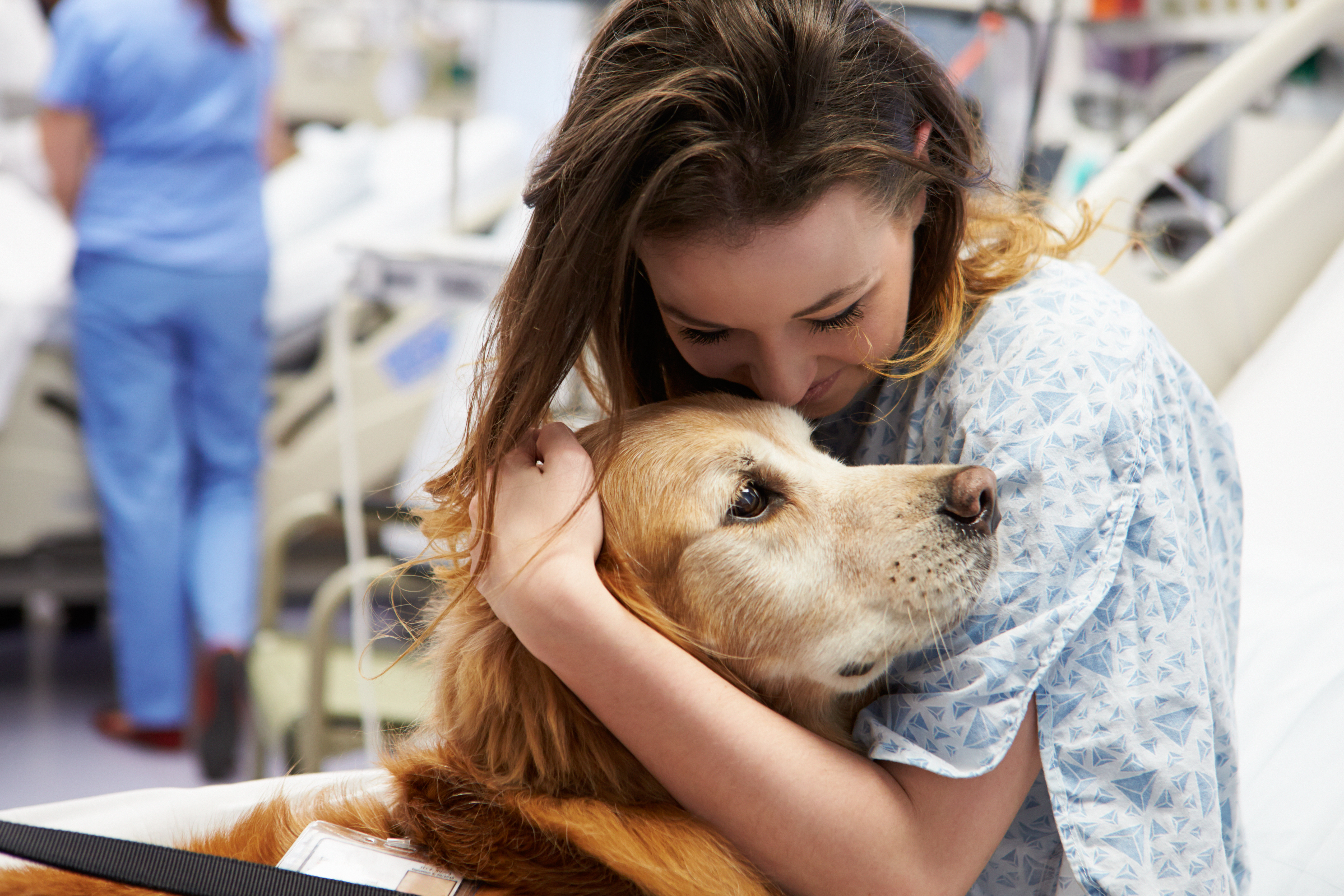
3. Good Temperament Around Strangers
Therapy dogs are exceptionally good with strangers. They do not show signs of discomfort or fear when meeting new people, which is essential for their role in hospitals, schools, and other public settings where they constantly encounter unfamiliar faces.
4. Adaptability to Various Environments
A therapy dog's ability to adapt to different environments is essential. Whether it's the quiet of a library, the bustling corridors of a hospital, or an open space in a park, these dogs can adjust their behaviour accordingly, remaining calm and focused regardless of the setting.
5. Resilience to Stress
The nature of therapy work can sometimes be stressful for both the dog and the handler. A good therapy dog can handle this stress without becoming agitated or upset. This resilience is vital, as it ensures that they can continue to provide support without being affected by the emotional or physical strain of their environment.
6. Intuitive to Emotional Needs
Therapy dogs often display an intuitive understanding of the emotional needs of the people around them. They seem to know just when to offer a nuzzle for comfort or when to simply sit quietly by someone's side. This sensitivity is what makes them so effective in therapeutic settings.
7. Well-Trained and Socialised
Besides their innate qualities, therapy dogs are also well-trained and socialised. They are taught to follow commands, behave appropriately in various situations, and interact positively with both people and other animals.
8. Consistency in Behaviour
Consistency is key for therapy dogs. They must reliably demonstrate their calming, friendly, and gentle nature each time they are in a therapeutic setting. This predictability in behaviour ensures a safe and positive experience for those interacting with them.
How Do I Know if My Dog Can Be a Therapy Dog?
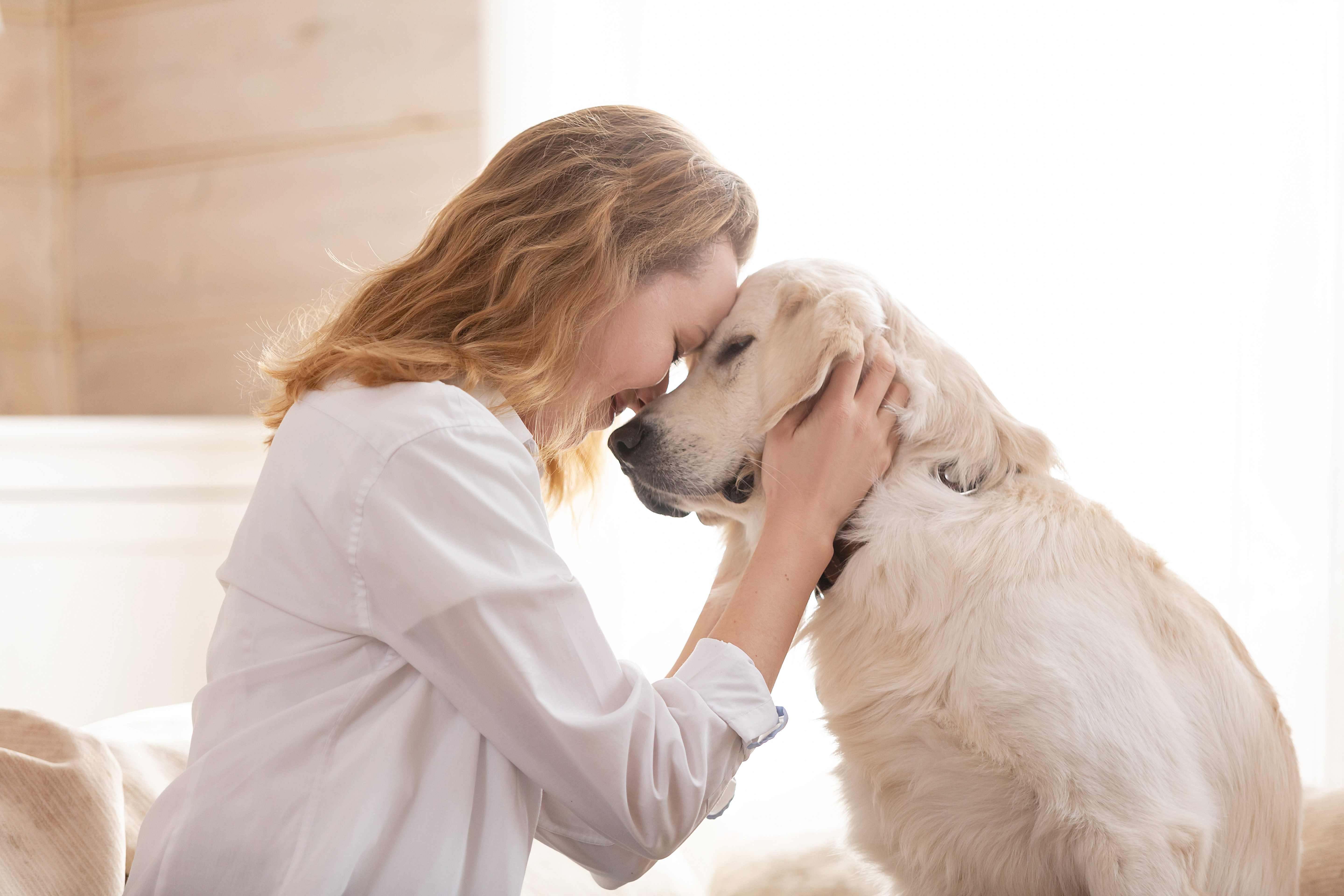
If your dog is calm, gentle, friendly, and sociable, they might be a good candidate to be a therapy dog. However, they also need to undergo training and certification. This ensures that they can handle different environments and interact safely and effectively with various people.
Can Any Dog Be Classed as a Therapy Dog?
While many dogs have the potential to become therapy dogs, not all dogs are suitable for this role. It depends on the individual dog's temperament and their ability to complete the necessary training successfully.
Can a Shy Dog Be a Therapy Dog?
A shy dog can be a therapy dog if they can overcome their shyness around strangers. The key is that they must be comfortable and calm in various environments and situations.
What is the Best Dog for a Therapy Dog?
There isn't a specific breed that is considered the best for therapy work. It's more about the individual dog's temperament and ability to interact with people in a calm and friendly manner.
The Difference Between Therapy Dogs and Service Dogs
Let’s look into the differences between service dogs and therapy dogs:
Legal Distinctions
- Service Dogs: These dogs are trained to perform specific tasks for people with disabilities. Under UK law, service dogs are recognised as an essential aid for their handlers. The Equality Act 2010 in the UK grants service dogs the right to accompany their owners in public places, including restaurants, stores, and on public transport. This legal recognition underscores their role as essential for the day-to-day functioning of their handlers.
- Therapy Dogs: Unlike service dogs, therapy dogs do not have a legal definition or recognition in the UK. They are not granted the same access rights to public spaces as service dogs. Therapy dogs provide psychological or emotional support to various people, not just their handlers. Although they are highly valued for their therapeutic benefits, they are not considered essential aids for a specific disability, which affects their legal status in terms of public accessibility.
Functional Differences
- Task-Oriented Training: Service dogs undergo rigorous training to perform specific tasks that their handler cannot do because of their disability. This could include guiding someone who is blind, alerting someone with diabetes to low blood sugar levels, or providing physical support to someone with mobility issues. Their training is tailored to the handler's unique needs.
- Emotional Support and Interaction: Therapy dogs are trained to provide comfort and emotional support. Their role is to interact with different people, often in various settings like hospitals, schools, or nursing homes. The focus is on using their presence to improve mental and emotional wellbeing, rather than performing specific physical tasks.
Impact of These Differences:
- Access to Public Places: While service dogs are legally allowed in most public areas, therapy dogs do not have this automatic right. It's always recommended to check with establishments regarding their policy on therapy dogs.
- Role in Support: The role of service dogs is more individual-focused, directly aiding their handler. Therapy dogs, however, provide broader support, positively impacting many individuals through their calming presence.
Do Therapy Dogs Get Paid in the UK?
Therapy dogs do not receive monetary compensation. They, along with their handlers, typically volunteer their time to help others.
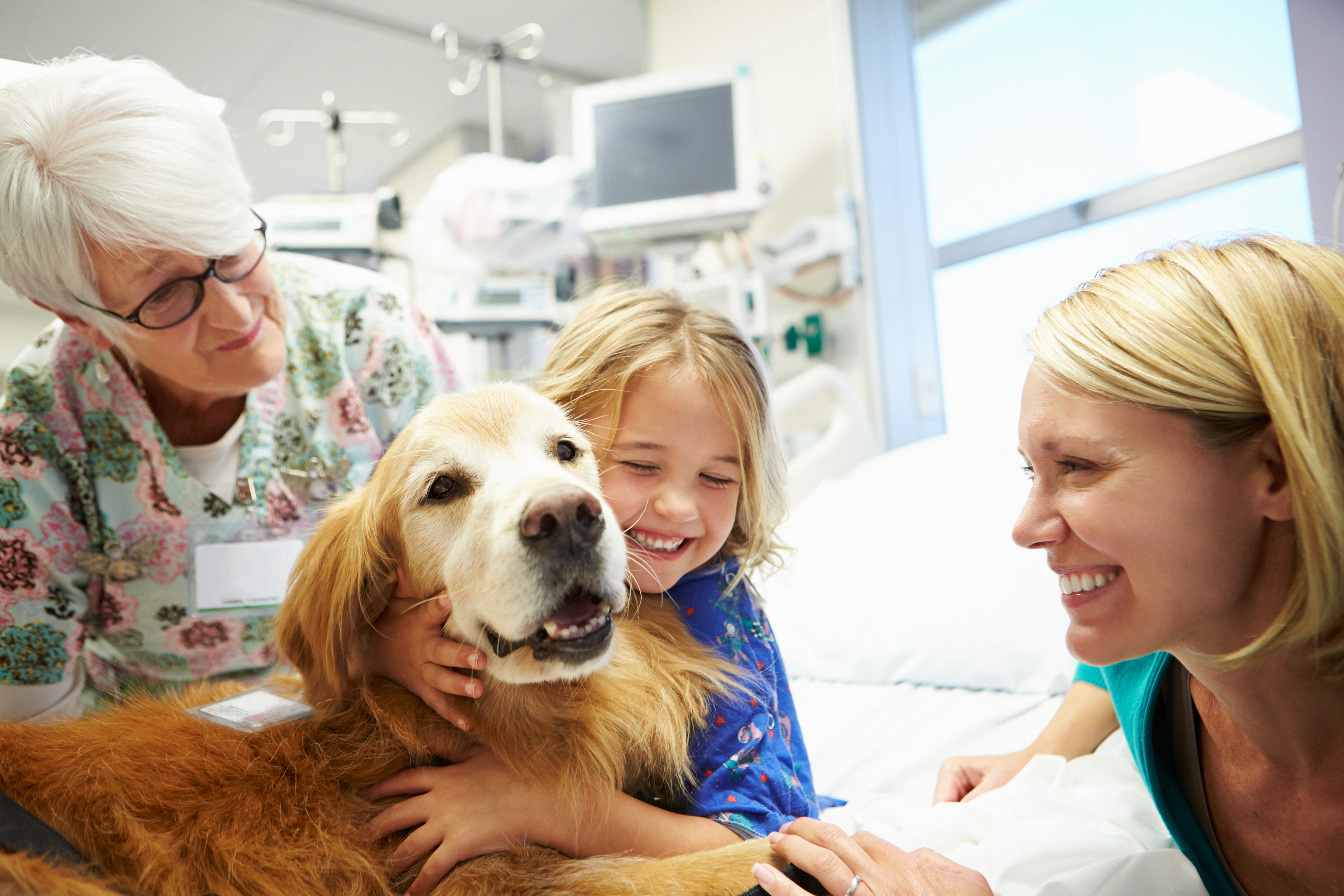
Training and Certification: Preparing a Dog for Therapy Work
The journey from a regular pet to a certified therapy dog involves a series of steps, each designed to ensure that the dog is well-prepared for their therapeutic role. Let's explore what therapy dog training entails:
The Training Process
- Basic Obedience Training: The foundation of a therapy dog's training is basic obedience. Dogs must master commands like sit, stay, come, down, and heel. This level of control is essential for ensuring the dog can behave well in various environments.
- Socialisation and Exposure: Therapy dogs must be comfortable and calm in a variety of settings. They are exposed to different environments, sounds, and groups of people as part of their training. This exposure helps them become adaptable and unflappable, regardless of the situation.
- Specific Therapy Training: Beyond basic obedience and socialisation, therapy dogs undergo training tailored to therapeutic interactions. This includes learning to be gentle with different types of people and understanding how to approach and interact with someone in a wheelchair or someone who moves unpredictably due to a disability.
Certification Requirements
- Assessment of Temperament: A crucial part of the certification process is assessing the dog's temperament. They must be naturally calm, friendly, and not easily startled or scared. Dogs that show signs of aggression or excessive shyness are usually not suitable for therapy work.
- Health and Grooming Standards: Therapy dogs must meet specific health and grooming standards. Regular check-ups, vaccinations, and a clean, well-groomed appearance are necessary to ensure they are healthy and presentable during their interactions.
- Certification Tests: Organisations that certify therapy dogs have tests to evaluate the dog’s readiness. These tests typically assess the dog's obedience, behaviour, and interaction with strangers. Passing these tests is a crucial step in becoming a certified therapy dog.
The Importance of Training and Certification
- Ensuring Safety and Consistency: The training and certification process is essential for ensuring that therapy dogs are safe and consistent in their behaviour. This consistency is essential for the people they interact with, particularly in sensitive environments like hospitals or schools.
- Building Trust: Certification helps build trust between the therapy dog teams and the facilities they visit. It assures the staff and individuals they interact with that the dog is well-prepared and capable of providing safe and effective support.
- Maximising Therapeutic Impact: Well-trained and certified therapy dogs are better equipped to provide the intended therapeutic benefits. Their training enables them to be more effective in reducing stress, anxiety, and loneliness among the people they help.
Recommended for you!
Best SellersHow Do You Qualify for a Service Dog?
Qualifying for a service dog, especially for anxiety, involves a structured process that begins with a professional diagnosis. If you're considering a service dog to help manage anxiety, the first step is to consult with a healthcare professional, such as a psychiatrist, psychologist, or general practitioner, who can diagnose your condition. Following this, you'll need to meet specific criteria set by service dog organisations.
These criteria often include demonstrating how a service dog would assist in managing your anxiety, ensuring that your living environment is suitable for a dog, and possibly undergoing an assessment to determine your ability to care for and handle a service dog. It's also important to understand that service dogs require a significant commitment of time, energy, and resources, as they are working animals trained to meet specific needs.
Study Animal-Assisted Therapy for £29
Dive into the heart of animal-assisted therapy with our Animal Assisted Therapy Diploma Course, a comprehensive journey into this compassionate field.
What You'll Learn
- Understanding Therapy Animals: Learn about their roles, the emotional and physical benefits they provide, and the science behind animal-assisted therapy.
- Personal Development and Practical Skills: Go beyond theory and engage with practical knowledge. Learn how you can train your own pet to be a therapy animal, understand the ethical considerations, and explore the dynamics of animal-human interactions in therapeutic contexts.
- A Pathway to Emotional and Mental Well-being: Understand how animal-assisted therapy can be a powerful tool in promoting mental health, offering comfort, and fostering emotional connections. This course opens the door to a world where animals are not just companions but also healers and supporters.
Special Offer
We are excited to offer you this comprehensive Animal Assisted Therapy Diploma Course for just £29, saving you over £100!


